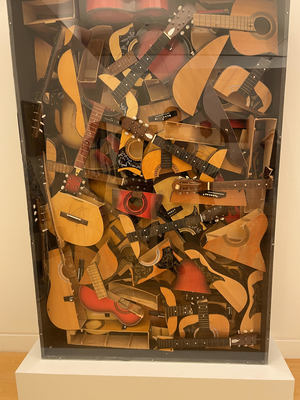OBJECTIVES: (page managed mainly by the French teacher)
- get new ideas to socialize
- learn how to look at art, how to talk about art and how to enjoy art.
- develop the faculties of observation, judgment and expression.
- visits that encourage each young visitor to interpret a work of art or a heritage object, to appreciate it, to make it their own, thus helping them to make sense of and experience a unique encounter with the work of art or the heritage object.
- do activities around art in teams
- To create friendly situations based on the concept of hospitality (between the works and each of the receivers as well as between the different visitors) in the museum space, a place open to all.
- art is another language
- understand how art can help us think with a positive mindset
COMPETENCES:
- artistic expression of ideas
- small talk about art
ABOUT THE MUSEUM: website
Designed by the architectural studios AFA, Adrien Fainsilber et Associés, the MAMCS building is organized around a vast nave. This veritable "interior street" distributes several spaces on the first floor: the modern art trail, the room dedicated to the work of Gustave Doré, the Graphic Arts and Photography Room, a large exhibition room, an auditorium, a bookshop and the library. On the first floor, where there is a restaurant, four large rooms are dedicated to the presentation of the permanent contemporary art collections. Nearly 5,000 square meters are thus devoted to the presentation of works.
The MAMCS keeps a close watch on young artists and reserves a special place in its annual exhibition program, as well as in its acquisition policy, for the new generation of visual artists. With three to four exhibitions per year, it is identified as a dynamic actor within French and European institutions.
In the original sense of the word, a museum - temple of the muses - is a place of inspiration. In the manner of Arp, a leading artist in the collection, who said of the collective approach taken for the Aubette with Sophie Taeuber and Theo van Doesburg:
"We wanted [...] to make the world simpler, to transform it, to give it more beauty",
The MAMCS aims to bring pleasure and inspiration to its visitors. The encounter with the work does not always go without raising questions and this is also the characteristic of the artist: to disturb us. Always on the lookout to give an account of the current state of research, creation and mediation of the work of art, MAMCS develops a diversified program that invites us to renew our view of the artists of our time, a time when "art is what makes life more interesting than art" (Robert Filliou).
HISTORY:
Designed by the architect Adrien Fainsilber, who had already realized, among others, the Cité des Sciences et de l'Industrie, the building of the Museum of Modern and Contemporary Art rises on the banks of the Ill.
The MAMCS covers an area of nearly 13,000 m2, of which 4,700 m2 are reserved for the presentation of works (permanent collections and exhibitions). The first floor is devoted to modern collections and exhibitions, while the second floor is devoted to contemporary art.
View of the first floor nave. Credits: Museums of Strasbourg / M. Bertola.
View of the first floor nave. Credits: Museums of Strasbourg / M. Bertola.
The building has a vast nave at its center (109 meters long, 25 meters under the ceiling) that distributes the different spaces. The backbone of the museum, this "interior street" allows for an open and legible tour. A strong architectural gesture, this axis unfolds under a large glass roof that draws the façade of the MAMCS on the banks of the Ill. A large bay window opening onto the room dedicated to Hans Jean Arp is visible from the outside. The building includes, in addition to the MAMCS, the Museum Library and the Museum Auditorium as well as a bookshop and a restaurant.
An ambitious construction, the MAMCS also plays a key role in terms of urban redevelopment in a project that aims to rethink the junctions to the historic center. By investing a piece of land that was once that of the slaughterhouses, near the train station, bordered by housing and by the Commanderie Saint-Jean (now the École Nationale d'Administration), the city created a new dynamic center.
Translated with www.DeepL.com/Translator (free version)
ACTIVITIES:
We split into two groups:
The French and German group.
We heard about the history and architecture of the museum.
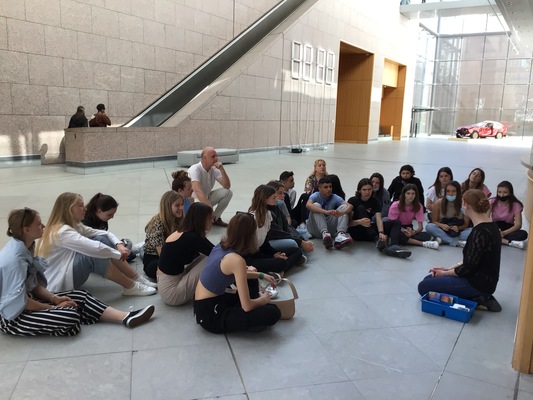
1st stop:
When were introduced to the work of art, and learnt with delight about the painting fabulous story! We could learn how such big painting could travel being unframed and then rolled up.
As we had pencils and notepads, we were asked to draw the scene observing the lines. It was not easy as the painting is huge and we had to reproduce it on a vry small notebook within just 10 minutes. What a challenge!
2nd stop:
Jean Arp: Le crucifié (1914-1915) - Painted wood
Jean Arp or Hans Arp (16 September 1886 – 7 June 1966) was a German-French artist who was born in Strasbourg. This explains why the Strasbourg Museum of Modern and Contemporary Art holds a good collection of his works.
Another story began with a very different work of art painting on a different medium: wood. This painting is in fact a collage which represents the Christ.
This time, we had to sit in pair face to face and draw our partner with only geometrical figures! It was really fun !
3rd stop: Richard Deacon - 2009
materials & techniques: oak and steel
Dimensions: 180 X 622 X 231 cm
4th stop
We were introduced to opinion cartoon!
SPECIAL MEDIA:
An opinion piece is an article, usually published in a newspaper or magazine, that mainly reflects the author's opinion about a subject. Opinion pieces are featured in many periodicals.
Opinion pieces may take the form of an editorial, an article, or a cartoon.
(We worked on opinion / committted cartoons last year:
click to see)
The Spanish and Greek group.
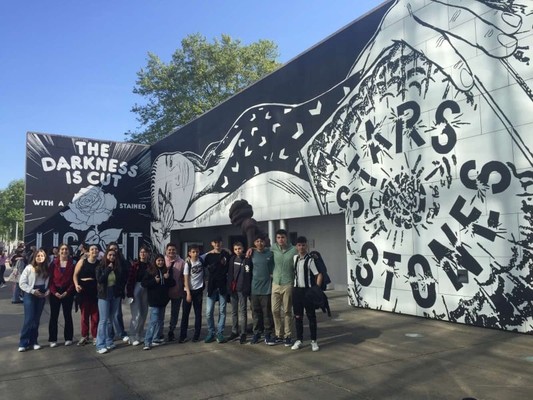
1st stop
Talking about the difference between Modern and Contemporary Art .
Modern art is that which was created sometime between the 1860s (some say the 1880s) and the late 1960s (some say only through the 1950s). Art made thereafter (e.g., conceptual, minimalist, postmodern, feminist) is considered contemporary.
Beyond the time frames, there are conceptual and aesthetic differences between the two phases. Art was called “modern” because it did not build on what came before it or rely on the teachings of the art academies.
Is it art, Madam?
Giulietta
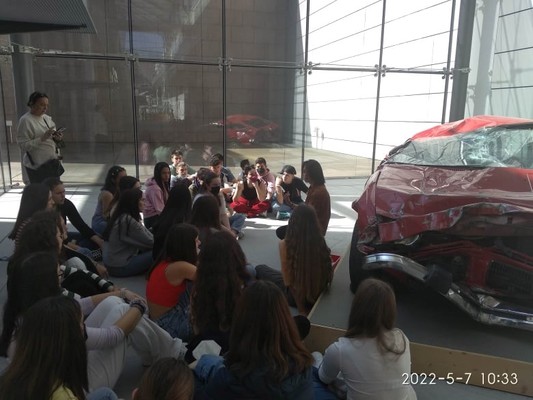
2nd stop
Impressionism, Monet
Claude Monet, born as Oscar-Claude Monet on November 14, 1840 in Paris and died on December 5, 1926 in Giverny, was a French painter and one of the founders of Impressionism.
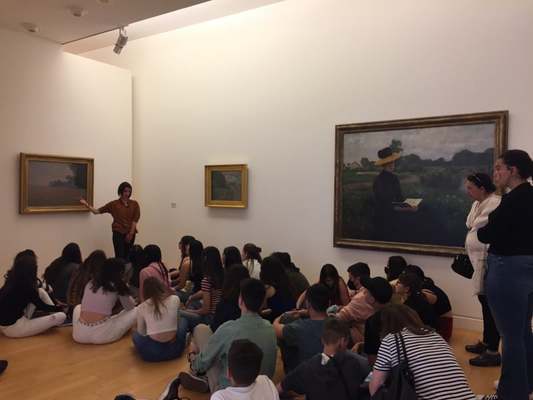
Champ d'avoine aux coquelicots, Claude Monet
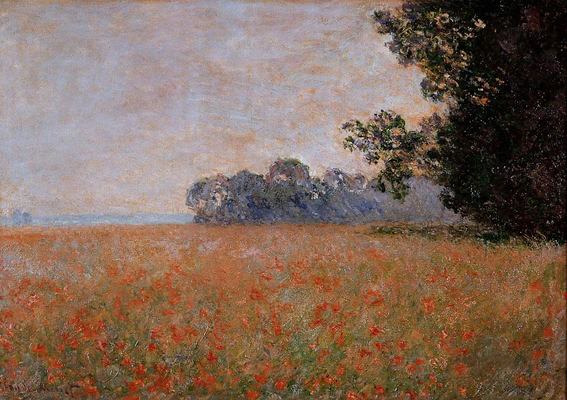
3rd stop
Cubism, Arman
Arman (Nice, 1928 – New York, 2005)
1974
